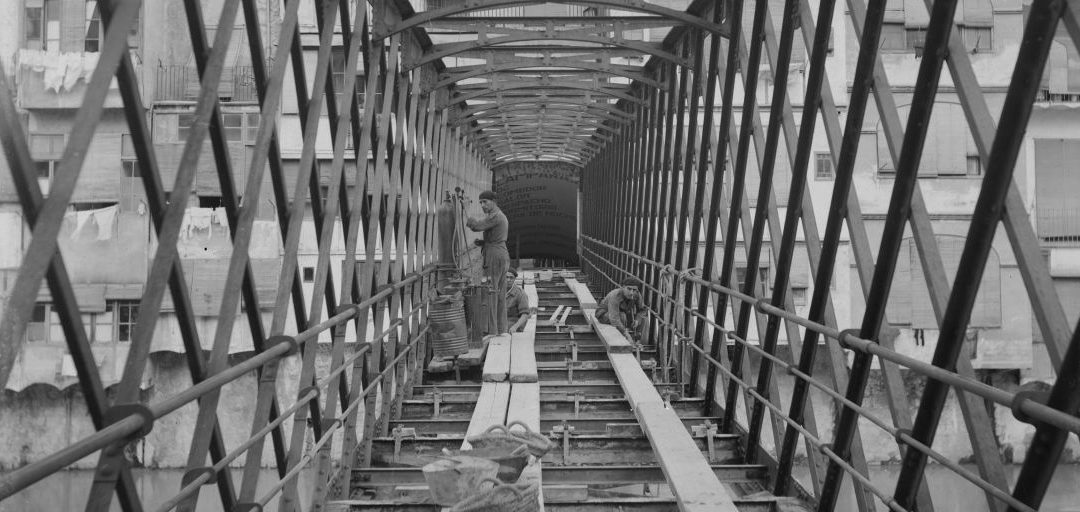img. from CRDI’s collections in Europeana: Construction of the bridge at Peixateries Velles in Girona, Spain, 1923, ph. Josep Jou Parés, CC BY-NC-ND. CRDI/Ajuntament de Girona
In the framework of a capacity building effort to support digital transformation of the cultural heritage sector, that is promoted within the EU-funded Europeana DSI4 project, a case study was developed by Photoconsortium, the Europeana accredited aggregator in the domain of photography, about the benefits and impact that Cultural Heritage Institutions can gain from publishing high-quality, open access heritage collections in Europeana, the European digital gateway to cultural heritage.
The case study analyses the stories, experiences and lessons learnt by the municipal audiovisual archive of the city of Girona, managed by CRDI, the Centre for Image Research and Diffusion. Currently, CRDI’s collections in Europeana amount to ca. 150.000 top quality photographic and audiovisual records, complying to the highest quality levels of the Europeana Publishing Framework and available for reuse.
Well begun is half done: sharing high quality collections from the archives managed by CRDI, the Centre for Image Research and Diffusion in Girona
by Valentina Bachi (Photoconsortium), with the collaboration of David Iglésias Franch (Ajuntament de Girona), Adina Ciocoiu (Europeana Foundation), Sofie Taes (Photoconsortium).
Introduction
CRDI, the Centre for Image Research and Diffusion in Girona, owns a large Image Archive that holds a wealth of materials reflecting different aspects of daily life in Girona and its rich cultural heritage.
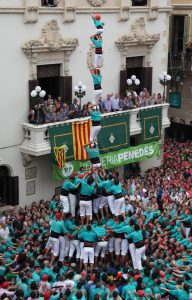
Diada castellera de Sant Fèlix a Vilafranca del Penedès. Els Castellers de Vilafranca carregant un pilar de 8 amb folre i manilles a la plaça de la Vila. CC BY-NC-ND. CRDI/Ajuntament de Girona
CRDI is a Department inside the Record Management, Archives and Publications Service of Girona City Council. It is a founder member of Photoconsortium Association and very involved in different international initiatives regarding Photography and Audiovisual Heritage. Its mission is to know, to protect, to promote, to offer and to disseminate the Image Heritage of Girona. The main services it provides are: preservation and conservation; on-site and online consultation: reproduction of original images; advice on the organization and management of fonds and collections; assessment and selection; implementation of technologies; management of intellectual property rights; guided tours for schools and specialists, and collaboration on outreach and training activities in connection with images.
CRDI has been a content provider of heritage photography collections in Europeana since 2012 when it became a major provider when taking part in the aggregation project Europeana Photography (2012-2015). Since then, the collections offered by CRDI to showcase in the Europeana portal grew to a considerable amount of 400.000 records, of which today over 150.000 photographic top quality records are available for any Europeana visitor for consultation and reuse.
Source metadata processing and workflow
A high quality working methodology for the documentary treatment is in place for CRDI collections, where the work is based on metadata standards that facilitate interoperability and the use of skosified vocabularies (vocabularies converted to SKOS format, Simple Knowledge Organisation System) to enhance access at the level of authorities, thematic indexes and geographical indexes. The metadata that corresponds to the description of the photographic records, converges in large part with the metadata available to the image industry and mainly Dublin Core, IPTC and XMP standards. Unique identifiers (URIs) of these metadata standards are used and, exceptionally, non-industry standardized metadata are included and, given their relevance, are created on the XMP platform, as is the case with the photographic processes.
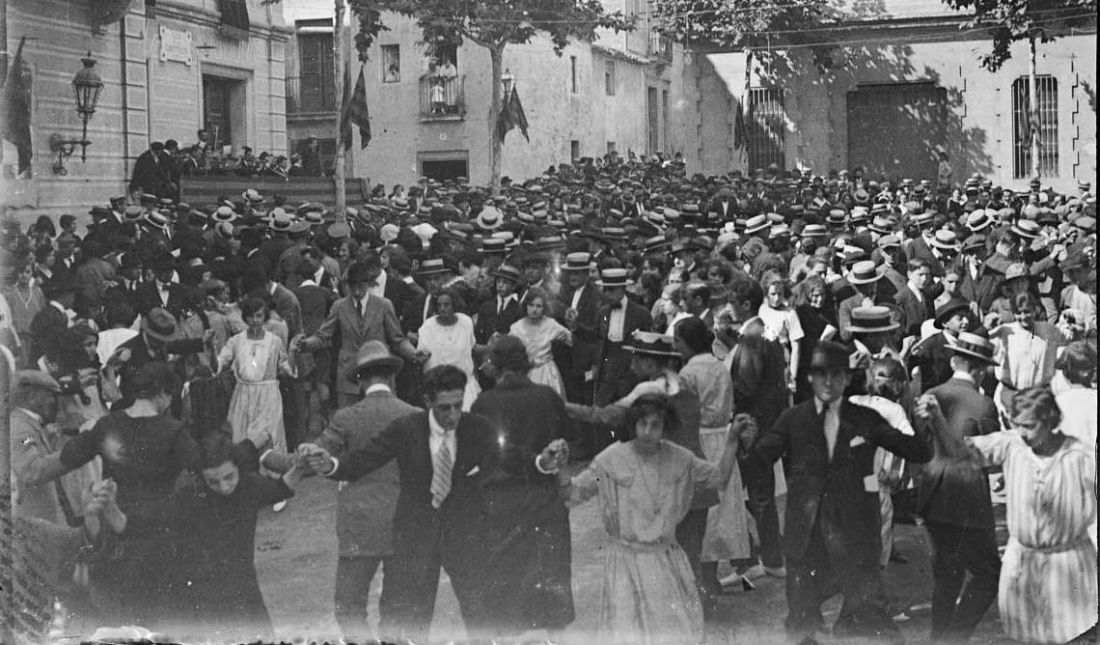
Sardana dance in the Town Council Square Sarria in Barcelona, Public Domain. CRDI/Ajuntament de Girona
Regarding the use of SKOS vocabularies, the main reference is the AAT (Art and Architecture Thesaurus) of the Getty Research Institute, as it is one of the most used. Its thematic scope is wide and universal and, moreover, it is quite specific with regard to the terminology needed for the indexing of the iconographic contents of the collections. The contents, in addition to the arts and architecture, also include those terms related to material culture, such as applied arts, archaeology, archival records and related disciplines.
In addition to this general vocabulary, it is important to keep in mind the use of skosified vocabularies for the indexing of proper nouns of more local incidence. In this case, Wikidata identifiers are used. Using Wikidata makes it possible to have a URI for all these proper names that can be used in a semantic environment such as Europeana. However, many of these proper names don’t exist on Wikidata and so, therefore, it is necessary to create them, which is done according to the needs arising from the different projects.
Projects and collections in Europeana
The earliest photographic collections aggregated by CRDI in Europeana date back to 2014 when a stunning selection of ca. 50.000 records from the City Archive fonds were delivered in the framework of the EuropeanaPhotography project. The collection includes early photography from 1839, which is universally considered the year when photography was born. The collection aggregated by CRDI, and now managed under the umbrella of Photoconsortium as the Europeana accredited aggregator in the domain of photography, offers beautiful portraits, landscapes and city sights reflecting life in and around Girona in the period 1839-1939, using a variety of early photographic techniques including daguerreotype, ferrotype, ambrotype and stereoscopic views. Another impressive batch of records of different types (newspapers, videos, films, historical records, posters, and also photographs) were then aggregated under the project Athena Plus, for which it is currently ongoing an effort of quality improvement and republication.
Born in England, William Henry Pratt became star-actor Boris Karloff (alias ‘The Grinch’) in Canada, 1929/32, Public Domain, CRDI/Ajuntament de Girona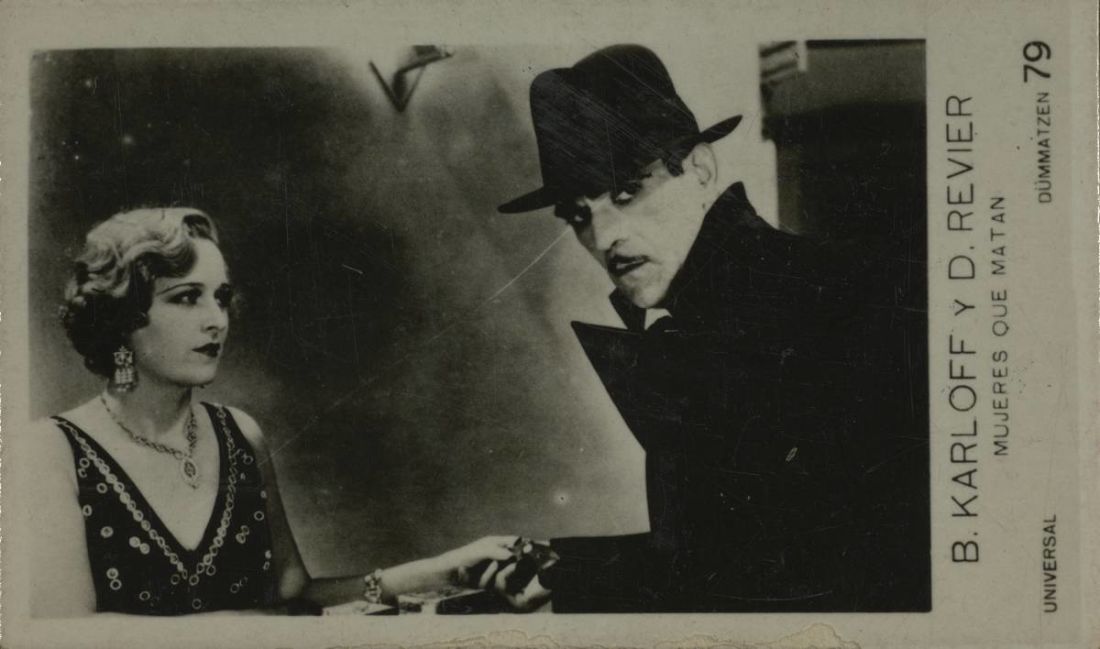
Moving forward in time, another great collection that was provided by CRDI in Europeana is focused on the history of the 1950s, delivered in the context of the CEF project Fifties in Europe Kaleidoscope (2018-2020). The project also included participatory activities organized in Girona to collect oral memories that enrich the heritage photography and generate new knowledge from the communities. In fact, family photography and the cherished family albums represent a small but relevant piece of the bigger picture of European history as witnessed by heritage photography.
In the context of the Europeana Sports project, 22.000 more photographs and 100 videos were aggregated by CRDI, this time with the thematic focus of witnessing sport events and competitions. Again participative activities were included in the project’s action by CRDI: an event relating to the city’s rugby club history was organized where more than 100 former players and members came together to share their memories. Organizer David Iglésias says, ‘It was amazing to see how the rugby players were interested in preserving their stories. It became very clear how people value the work of archives, as a vital (and accessible) part of the city’s life‘.
Marc Gasol, ph. Joan Sabater Brunet. CC BY-NC-ND. CRDI/Ajuntament de Girona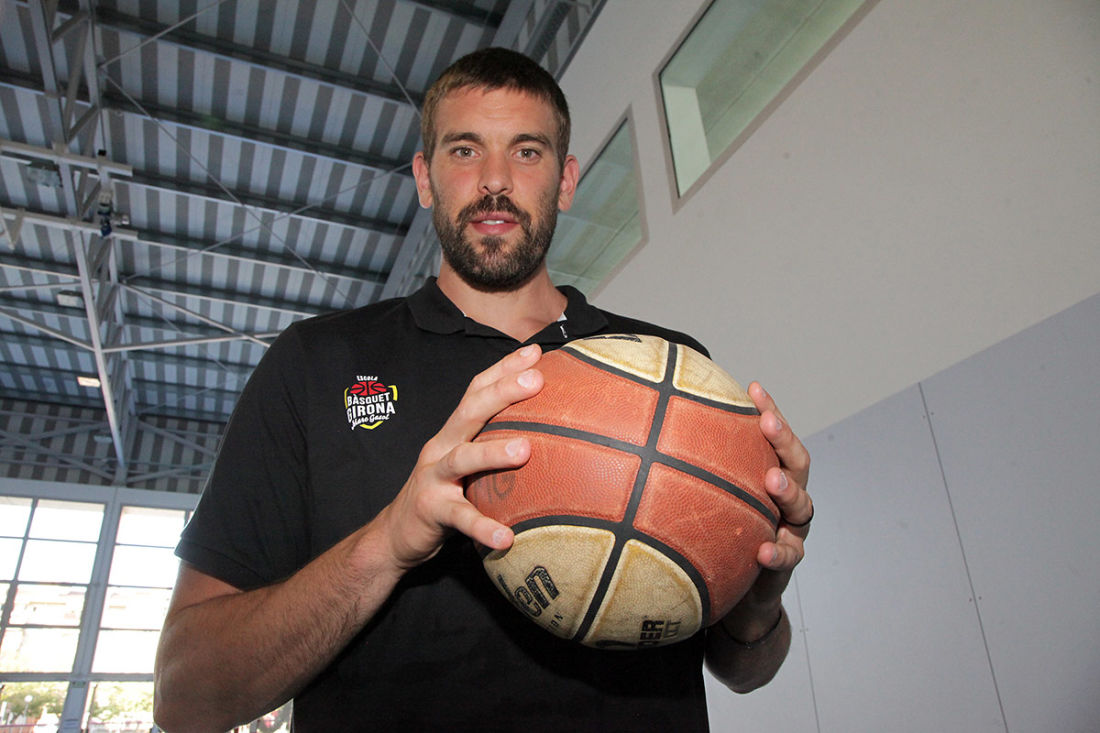
Finally and more recently, CRDI is working on two additional collections for Europeana: heritage and contemporary photographs and videos about the tradition of Castellers in Catalonia, a very typical form of intangible heritage belonging to a well-defined cultural community; and, by using the state-of-the-art technology, a selection of early daguerreotypes digitized in 3D with photogrammetry technique. These two collections are created for Europeana in the context of the WEAVE project (2021-2022).
Data quality in Europeana (data accessed in April 2022)
As a recent tool made available for Europeana users, the new Europeana Statistics Dashboard allows for easy and deep investigation about the data and metadata tiers of any Europeana collection. The Dashboard was presented for the first time in the context of Europeana Aggregators Forum in Spring 2022 and it is a very useful tool for Aggregators and content providers of the Europeana ecosystem.
By using the Dashboard it is possible to see the quality level of CRDI’s collections since the very early days. Despite this collection being aggregated since 10 years ago, well before the Europeana Publishing Framework (EPF) was established with bigger focus on the quality of aggregated collections, the levels of content and metadata quality provided to Europeana were already very high at that time and over the standards, corresponding to today’s EPF tier 3 for content (93% of the total) and A for metadata (98% of the total). This is proof of the high standards in use at CRDI since the early days of the digital transformation of cultural heritage institutions.
The quality of CRDI’s collections were even increased later on. Overall, at the time of writing (April 2022) 143.000 records are aggregated under the umbrella of Photoconsortium, with ca. 5.000 items in tier 4, i.e. open access and fully reusable, 98.000 tier 3, and 40.000 tier 2. Work is ongoing in the context of the WEAVE project to provide additional 3.000 tier 4 objects including heritage photographs, videos and high-quality 3D objects.
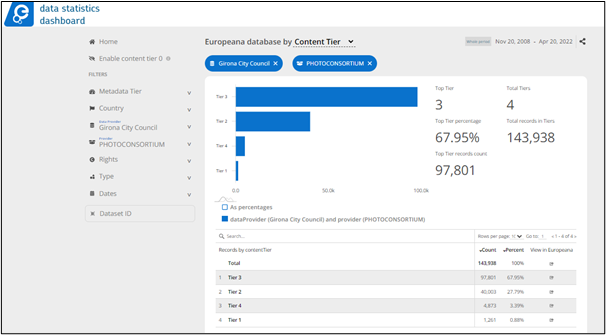
It is worth to mention that the policy of CRDI in terms of reuse and licensing is oriented towards openness, and in facts the right labels that CRDI applies to the Europeana records are either “No Copyright” or “CC-BY-NC-ND”, with a minimal amount of records labeled as “Copyright not evaluated” where necessary.
As for metadata tier, in April 2022 the majority of CRDI records reached the tier B (87.000 records corresponding to 60%), with nearly 50.000 records that classify metadata tier C (top quality level, 33%).
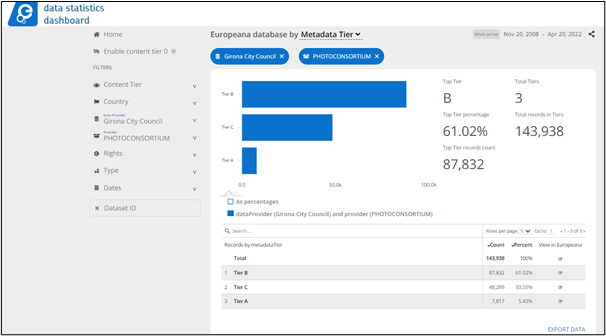
Editorials and reuse
The case of CRDI’s collections is exemplary of the Europeana publishing strategy “what you give is what you get”: in fact, high quality and reusable collections are best positioned for gaining big visibility in Europeana portal with the inclusion in blogs, galleries, exhibitions and learning materials.
A variety of images from CRDI is part of the Industrial Photography exhibition, to illustrate the chapters about Factories in Focus, with a dedicated photographic portfolio documenting the history of the Catalan textile plant Fàbrica Gròber (a dedicated blog was also produced to explore this theme), and many of its documentary images are of an outstanding technical and aesthetic quality, owing to the mastery of photographers such as Josep Thomas Bigas (1852-1910). Also the chapters New Perspectives and Geometry and Line are enriched with exquisite photographs from CRDI’s collection. This exhibition, one of the earliest that was curated by Photoconsortium for Europeana, wanted to unveil how many photographers in the machine age used to portray the vastness and energy of factory halls, and to give a glimpse of the innovations and technological triumphs that sustained the rise of industry.
The Messerschmitt Kabinenroller in the streets of Girona, July 1954, ph. Martí Massafont Costals. CC BY-NC-ND. CRDI/Ajuntament de Girona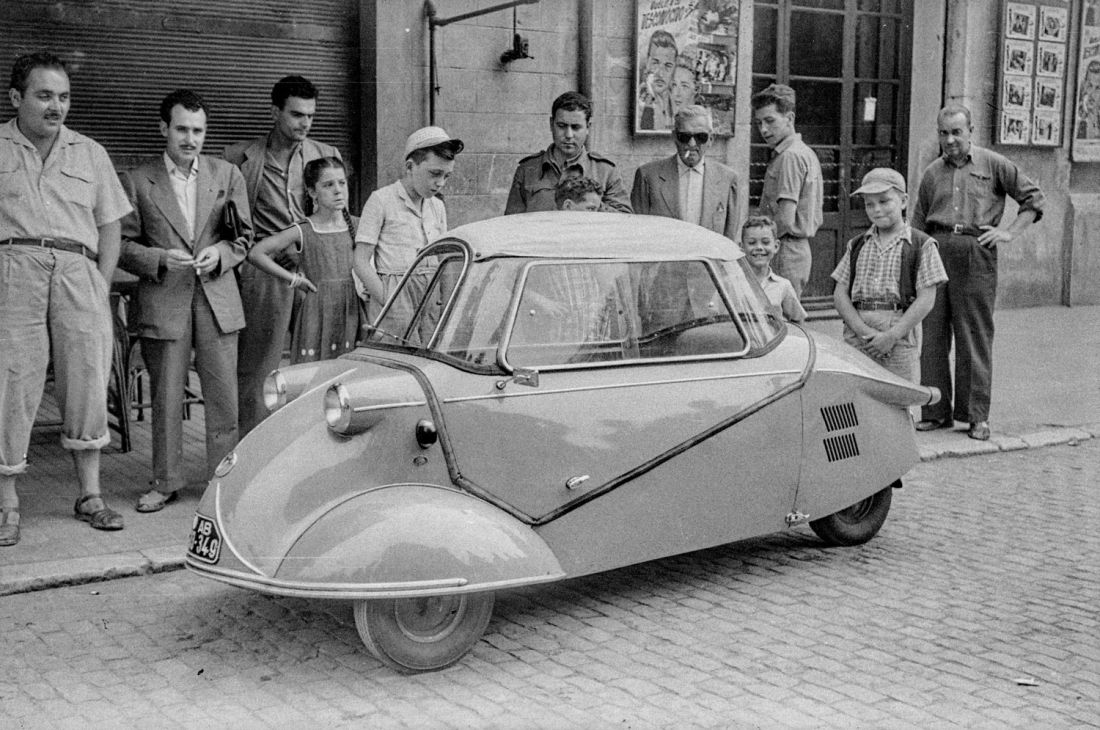
Another early example of reuse of photographic content in a virtual exhibition is Power to the People, where again, especially in the chapters Party Crowd and Mix and Marvel, some stunning images from the Catalan archive help telling stories of how large groups of people are capable of big things, making correct estimations and taking sensible decisions than its brightest individual. For the exhibition on migration, Europe on the Move, a CRDI image was used as a token image (‘hero’) for the chapter on Rising Stars. In the exhibition Celebrations in Europe, stories and pictures from CRDI were instrumental in developing the narrative of chapter 7, Family and Community.
Female workers winding wire at Fàbrica Gròber, c. 1910-1920 Creatore: Josep Thomas Bigas. Public Domain. CRDI/Ajuntament de Girona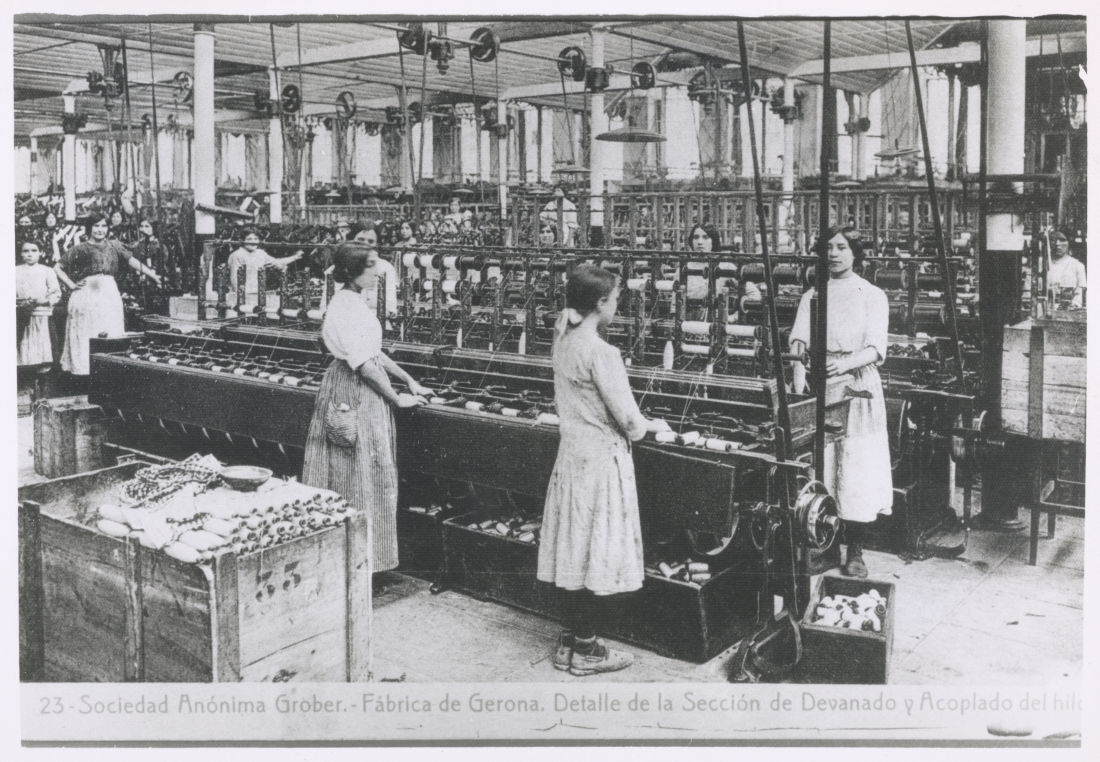
More recent editorials published in Europeana are the virtual exhibition BLUE SKIES; RED PANIC that highlights how in the 1950s political situations and living standards were very different across Europe. World War II had left the continent divided: the US and the USSR took up opposite positions, and the onset of the Cold War – represented by the ‘Iron Curtain’ – separated Eastern bloc countries from the Western allies; but despite this fact, not everything was so ‘red’ or ‘blue’ in the 1950s: there were also many shades of gray, where the two political spheres actually seem to have converged, echoed or mirrored in cultural and societal practices. Here CRDI’s images are perfect to illustrate the chapter about transports and automobiles On the Move and the one about the many roles of women Cherchez la Femme. Another nice example is the story of basket player Marc Gasol who gains a well deserved place in the virtual exhibition Heroes of the Olympic games, in the chapter Crowd Pleasers.
Teenage girls starting a new school year at Escolapias College, 1955. CC BY-NC-ND. CRDI/Ajuntament de Girona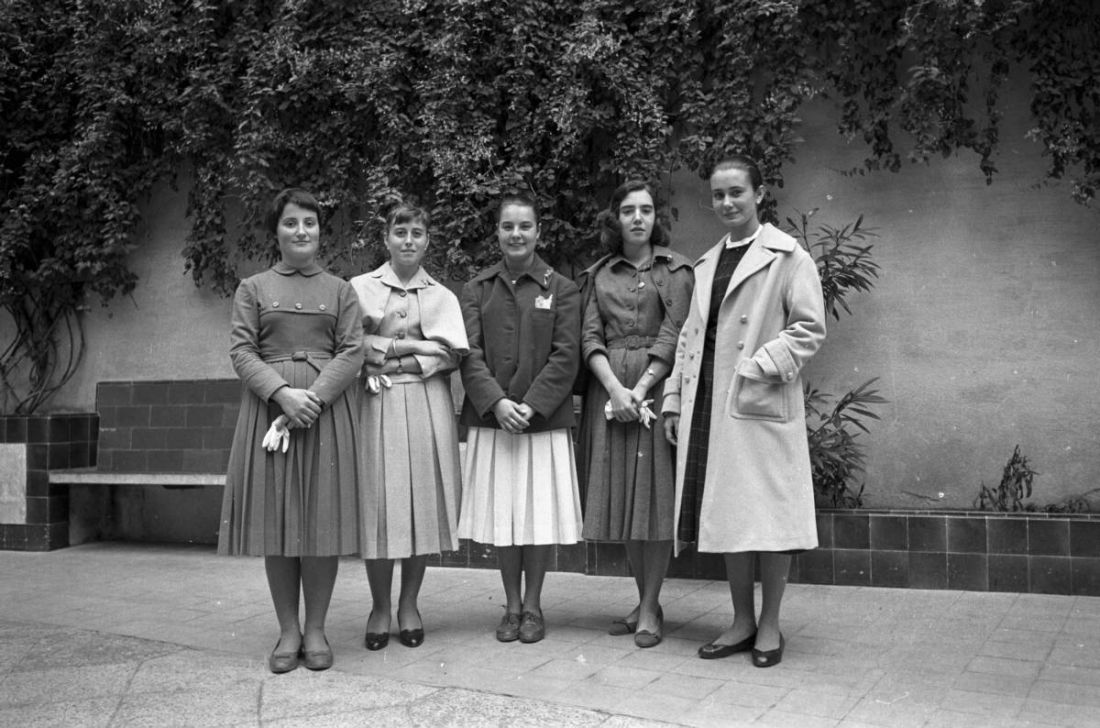
In the scope of the project Europeana XX – Century of Change, CRDI images were used among others in the blog Portrait of a Lady and in the big exhibition Family Matters, conceived to demonstrate that the concept of ‘family’ is open to interpretation and has evolved throughout history. The exhibitions is enriched with a variety of contents from CRDI, to illustrate the narratives in the chapters Law and Regulations, Century of the Child, The Chosen Family and Memories of a Lifetime.
Next to these editorials which have a storytelling approach on various themes, the photographic materials made available online by CRDI are perfect for reuse in the educational realm. Examples of this are the Learning scenario Colorful culture in the 1950s that was curated by Photoconsortium for Europeana Education as derived from the BLUE SKIES, RED PANIC exhibition; and reusable collections for e-learning activities that are currently available on the page of Photoconsortium in Historiana, the educational tool developed by Euroclio.

